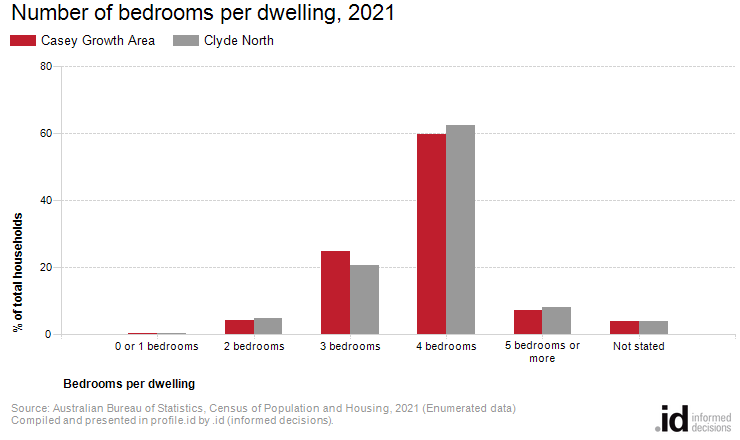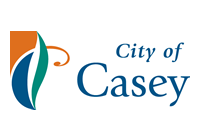Casey Growth Area
Number of bedrooms per dwelling
Dwellings with 4 bedrooms were the most common in Casey Growth Area in 2021.
The Number of Bedrooms in a dwelling is an indicator of the size of dwellings, and when combined with Dwelling Type information, provides insight into the role Casey Growth Area plays in the housing market. For example, an area of high density dwellings that are predominantly 1-2 bedroom are likely to attract students, single workers and young couples, whereas a high density area with dwellings that are predominantly 2-3 bedroom may attract more empty nesters and some families.
In combination with Household Type and Household Size, the Number of Bedrooms can also indicate issues around housing affordability, overcrowding and other socio-economic factors.
Derived from the Census question:
'How many bedrooms are there in this dwelling?'
Occupied private dwellings
Source: Australian Bureau of Statistics, Census of Population and Housing (opens a new window) 2006 and 2021. Compiled and presented by .id (opens a new window)(informed decisions).
(Enumerated data)

Compiled and presented in profile.id by .id (informed decisions).

Compiled and presented in profile.id by .id (informed decisions).
Dominant groups
Analysis of the number of bedrooms in dwellings in Casey Growth Area in 2021 compared to Clyde North shows that there was a lower proportion of dwellings with 2 bedrooms or less, as well as a lower proportion of dwellings with 4 or more bedrooms.
Overall, 4.5% of households were in dwellings with 2 bedrooms or less, and 66.9% of 4 or more bedroom dwellings, compared with 5.0% and 70.5% for Clyde North respectively.
The major differences between the number of bedrooms per dwelling of Casey Growth Area and Clyde North were:
- A larger percentage of 3 bedroom dwellings (24.8% compared to 20.7%)
- A smaller percentage of 4 bedroom dwellings (59.7% compared to 62.4%)
Emerging groups
The largest changes in the number of bedrooms per dwelling in Casey Growth Area between 2006 and 2021 were:
- 4 bedrooms (+14,952 dwellings)
- 3 bedrooms (+6,081 dwellings)
- 5 bedrooms or more (+1,773 dwellings)
- 2 bedrooms (+1,065 dwellings)
